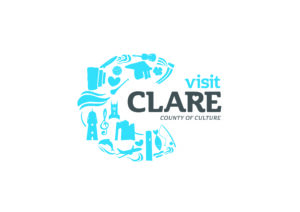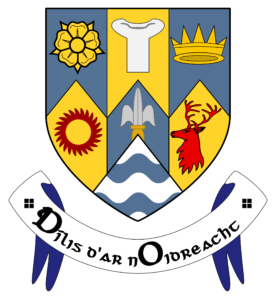Hostile Territory
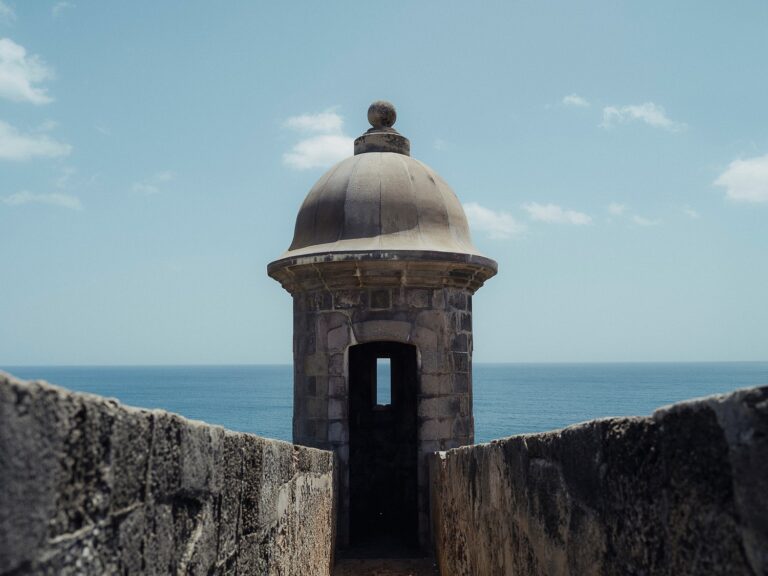
(Between inside and out)
Works from 2015–present by Ashley Hunt
Burren Annual Exhibition 2023
September 14 – October 20 2023
Opening Reception : Thurs Sept 14 from 6-8pm
Gallery Hours: Mon-Fri 9:30am-5:00pm
Hostile Territory (Between inside and out)
Burren Annual Symposium 2023
Wednesday, September 13, 2.00 – 5.00pm
contact@burrencollege.ie | +353 (0)65 7077200
The Burren Annual is supported by funding from the Arts Office at Clare County Council.
Hostile Territory (between inside and out)
Hostile Territory is an exhibition that looks at windows. With photography, research and writing, it tracks the thin, slit-shaped windows of modern prisons to their architectural antecedents, considering their relationship to pre-modern structures of defense, battle and worship, and the thresholds that are drawn between bodies, shaping their regulation, subjectivity, collectivity and vision. Complicating the narratives that place the birth of the prison within modernity, as one of the enlightenment institutions of governance and civic life, Hostile Territory looks instead to their emergence from spaces of warfare and the ideological production of enemies and outsides.
The series includes photography from multiple continents, including North and South America, Pacific Islands and Western Europe, picturing fortresses that resisted colonial aggression, castles that were inverted into jails, city walls that excluded and jailed, bunkers, armories and lookouts, and prisons converted into museums. Accompanied by writing on architecture, ruins, technology, the politics of looking, bodies and imaginaries, and the choreography between inside and out, it orients the viewer’s gaze across layers of time that shape the present and future, where architecture is a site of struggle and a repository of social and political memory.
While the hostility of the title connects to the hostilities staged at these thresholds of inside and out, it is also a hostility of meanings — meanings that contradict and undo, disassemble, bend and collapse, or are otherwise hostile toward carceral logics. This might make a way for a different repository of meaning to come forward — stories, identities, memories and narrative that are hostile to the prison’s narratives, its order, vision and schemas of legibility. New work created in Ireland specifically for the exhibition will also be exhibited and viewers will also be able to take home a free newspaper publication containing additional writing and images.
Ashley Hunt
Ashley Hunt is a North American artist, writer and educator whose films, photography, mappings and collaborations with grassroots organizations have engaged in struggle against the prison industrial complex in the U.S. for more than two decades. Starting with his feature documentary, Corrections (2001), to his current film cycle engaging abolitionist imaginaries through the closure of prisons and the ruins of carceral histories, his work documents both the expansion of the prison system and the activism that grows to resist, dismantle and build beyond it, having included collaborations with multiple organizations across the U.S..
Hunt’s ongoing works include Degrees of Visibility, an unprecedented photo and text survey of carceral landscapes across all fifty U.S. states and territories, studying how prisons are camouflaged and normalized within our everyday perception to form an “aesthetics of mass incarceration” (2010–2020); a film cycle on abolition, prison closures and ruins, including Ashes Ashes (2020) and Double Time (2021), and a forthcoming film on the repurposing of closed prisons and grief; the free dance school and exhibition, School for the Movement of the Technicolor People (2015–19), with taisha paggett, her dance company WXPT and Kim Zumpfe; the collaborative 9 Scripts from a Nation at War (2007), produced for documenta 12 with Andrea Geyer, Sharon Hayes, Katya Sander and David Thorne that explores the speaking and writing of history during the U.S.’ 21st century wars, including the public reading of Combatant Status Review Tribunals transcripts from Guantanamo Bay; and The Corrections Documentary Project (2001–2008), a body of videos, photography and mappings that grew out of Hunt’s documentary, Corrections, addressing the politics and resistance to prison expansion in the U.S..
In addition to his recent fellowship from the Art for Justice Fund, Hunt is the recipient of the 2019 Creative Capital and Andy Warhol Foundation Arts Writers Grant, the 2018 Graham Foundation Exhibition Grant, and the 2015 California Community Foundation Fellowship for Visual Artists, among others. His works have shown in venues ranging from community centers to prisons to museums, including P.S.1/MoMA, the ASU Art Museum, Pitzer College Art Galleries, Project Row Houses, the Hammer Museum, the Tate Modern, Documenta 12, and Sinopale Biennial in Turkey, and Woodbourne State Correctional Institute in upstate New York and Green Haven State Prison in Indiana. His writings include the book, Notes on the Emptying of a City, and the forthcoming Degrees of Visibility, and they have appeared in the Oxford Encyclopedia of Criminology and Criminal Justice, X-TRA Contemporary Art Quarterly, and the Los Angeles Review of Books, and multiple edited volumes on art and politics. He lives and teaches in Los Angeles on unceded territory of Tongva, Chumash and Fernadeño Tataviam peoples, where he also teaches in the Photography and Media Program at CalArts.
Burren Annual Symposium: Hostile Territories
Wednesday, September 13, 2.00 – 5.00pm, Lecture Hall
BURREN COLLEGE OF ART | BALLYVAUGHAN | CO. CLARE
The symposium is free and open to attend in person or virtually. If planning to attend in person, we kindly ask that you confirm your attendance through email contact:
contact@burrencollege.ie 065 7077200
The Burren Annual Symposium: Hostile Territories takes place in conjunction with artist Ashley Hunt’s exhibition Hostile Territory (Between inside and out) in the BCA Gallery. It brings together a panel of international artists, educators and activists to discuss key issues presented in the exhibition and to examine the relationship between incarceration, memory and the archive across international contexts.
Chaired by Conor McGrady, the symposium will feature presentations by a panel composed of Lisa Brock, Ashley Hunt, Cahal McLaughlin and Ines Schaber. Spanning Ireland, the United States and Germany, the symposium aims to generate discussion on the politics of historical and contemporary incarceration. Lisa Brock will discuss U.S. political prisoner and Black Liberation activist Assata Shakur in the context of historical and contemporary struggles for social justice. Ashley Hunt will present on work created specifically for his exhibition, and on challenging the dominant narratives surrounding incarceration. Cahal McLaughlin will highlight the Prisons Memory Archive as a repository of testimonials of former political prisoners and prison personnel, and the politics of memory as both contested space and lived experience during the Northern Irish conflict. Ines Schaber will present on her project The Workhouse, a collaboration with Avery Gordon for Documenta 13, and the relationship between confinement, punishment and storytelling.
PRESENTERS
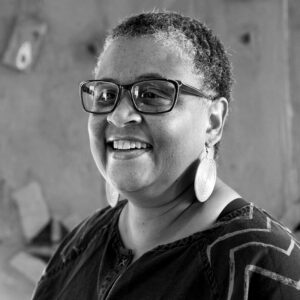
Lisa Brock
Dr. Lisa Brock is a professor and activist who has spent her life in social justice movements and over thirty years in higher education. She holds a doctorate in History from Northwestern University and spent ten years as founding Academic Director of the Arcus Centre for Social Justice Leadership at Kalamazoo College. As an academic leader, she has led massive changes on every campus she has worked, especially in the area of curricular diversity, equity and inclusion. While a specialist in Transnational Black History, she has a wide-range of knowledge in all areas of oppression. She develops workshops and trainings with folks who are prepared to take a probing look at racism, anti-racism, other forms of oppression, and social justice. These workshops center the voices and experiences of those most impacted by injustice but are created with the idea that all people, no matter their identities, ages, genders or sexualities can become anti-racist social justice agents of change. Doc Brock inspires regular people to make what the late Congressman John Lewis called “good trouble for justice”.
https://www.blackimagination.art/lisa-brock
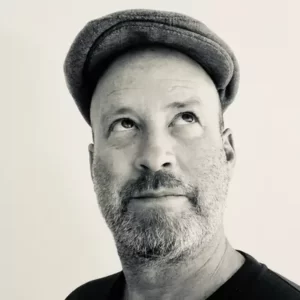
Ashley Hunt
Ashley Hunt is a North American artist, writer and educator whose films, photography, mappings and collaborations with grassroots organizations have engaged in struggle against the prison industrial complex in the U.S. for more than two decades. Starting with his feature documentary, Corrections (2001), to his current film cycle engaging abolitionist imaginaries through the closure of prisons and the ruins of carceral histories, his work documents both the expansion of the prison system and the activism that grows to resist, dismantle and build beyond it, having included collaborations with multiple organizations across the U.S. (please see above for full biographical details).
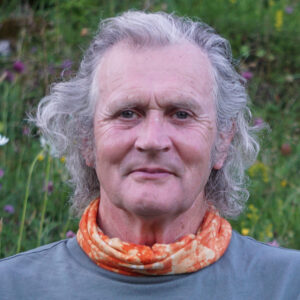
Cahal McLaughlin
Dr. Cahal McLaughlin is Professor of Film Studies at Queen’s University Belfast and Director of the Prisons Memory Archive – www.prisonsmemoryarchive.com – a collection of 160 filmed testimonies by those who passed through the prison gates during the conflict known as the ‘Troubles’ in the North of Ireland. As a documentary filmmaker, he has also engaged with methods of how we might address the representation of experiences of those who have suffered political violence in Haiti, Brazil, Peru and South Africa. His films and publications can be found at www.cahalmclaughlin.com

Ines Schaber
Ines Schaber is an artist and writer from Berlin. Her artistic work addresses image-making by investigating hidden layers of historical evidence. Since 2005 she has been engaged in the working archive, a series of case studies, texts, and artistic works through which she examines and tests notions of the archive. Usually triggered by a photographic record, her often collaborative projects explore the construction of memory and how new readings are generated over time. In 2012 she created, together with Avery Gordon, The Workhouse: Room Breitenau for documenta(13), a work that relates to the history of the former monastery, workhouse, prison, and reformatory Breitenau. Over time, the space has confined many persons considered extraneous and disposable subjecting them to a regime of punishment and “correction.” The Workhouse presents glimpses of fugitive knowledge that emerge in and around this prison in order to conjure historical alternatives that could have been taken but were not and to contribute to an ongoing archive of re-memory whose aims are not correction.
https://www.balticartcenter.com/events/the-workhouse-breitenau-room/
Panel Chair

Conor McGrady
Conor McGrady is a visual artist from the north of Ireland, who has lived and worked in England and the United States before relocating to the Burren. He has exhibited internationally, with one-person exhibitions in New York, Miami, Atlanta, Chicago and Zagreb, Croatia. His first solo Museum exhibition, Entering the Control Zone, took place at the Museum of Fine Art, Split, Croatia, 2021. Group exhibitions include the 2002 Whitney Biennial in New York, The Jerusalem Show VII: Fractures (Qalandiya International Biennale), Biennale of Contemporary Art, D-0 Ark Underground, Sarajevo-Konjic, Bosnia and Herzegovina. His writing has appeared in Ruminations on Violence (2007) State of Emergence (2011), State in Time (2012) and The Design of Frontier Spaces (2015). He is Dean of Academic Affairs at Burren College of Art.
The Burren Annual is supported by funding from the Arts Office at Clare County Council.
